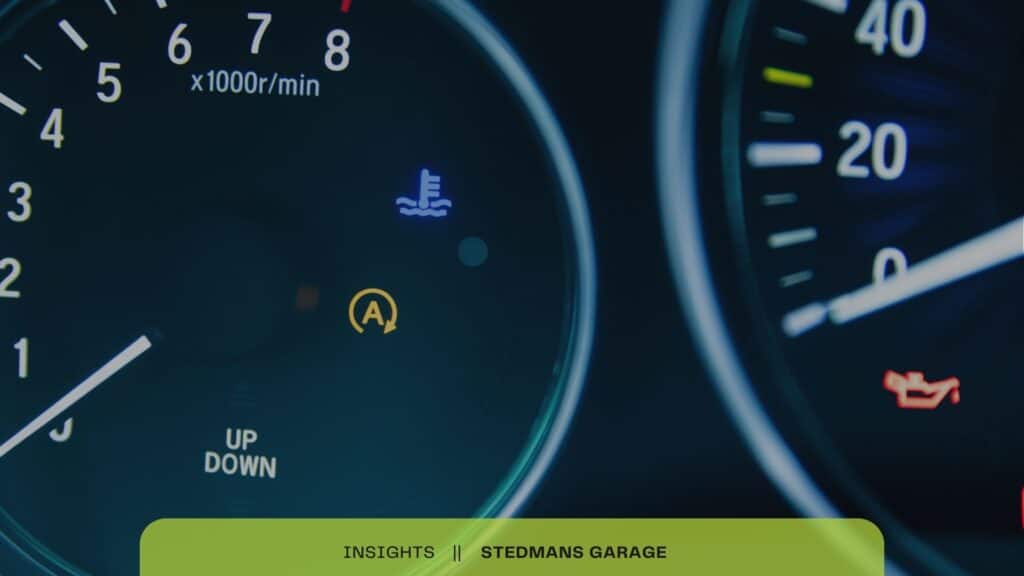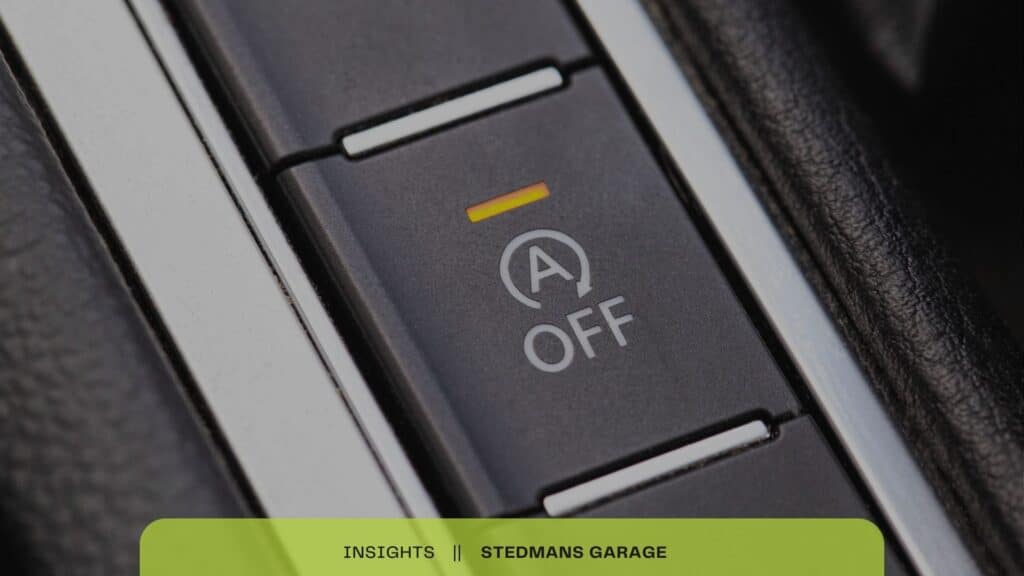Introduction
Audi’s start-stop system automatically shuts off the engine when the vehicle comes to a stop, such as at a red light or in stop-and-go traffic. This helps improve fuel efficiency and reduce emissions by preventing unnecessary idling. The engine then seamlessly restarts once the brake pedal is released or the clutch is engaged. The technology has gained widespread adoption across Audi’s lineup over the past decade. It’s a standard feature on most new Audi models. However, some owners have reported issues with the system not functioning properly. Common complaints include:
Unintended Shutdowns
The engine shutting off unexpectedly while driving or during inappropriate situations can be inconvenient and potentially unsafe. This could be due to a glitch in the system’s sensors or software. It may cause loss of power steering or delayed acceleration when trying to merge or make turns.
Failure to Restart
In some cases, the engine fails to restart automatically after the vehicle has stopped. This leaves the driver without power and unable to accelerate. The car may need to be manually restarted, which causes delay and frustration. A weak battery unable to provide enough charge to restart the engine is often the culprit. These defects defeat the purpose of the fuel-saving technology and can make driving unpredictable and dangerous. Diagnosing and repairing issues with Audi’s complex start-stop system requires professional technical skills. But understanding common problems can help owners decide whether to disable the system if it becomes unreliable.

Common Start-Stop System Defects
Audi’s start-stop system aims to improve fuel efficiency by shutting off the engine when the vehicle comes to a stop. However, some owners have experienced concerning defects with this technology.
Unintended Shutdowns
One of the most dangerous defects reported is unintended engine shutdowns while driving. This can occur if the vehicle computer incorrectly determines the vehicle has stopped, thus switching off systems like power steering and brake assist. Loss of these critical functions can lead to loss of control and collisions.
Failure to Restart
Many Audi owners also complain that the start-stop system fails to smoothly restart the engine after it has shut off at a stoplight or sign. This causes hesitation and delay when they try to accelerate, which has led to some dangerous situations.
These defects highlight safety concerns with the start-stop system. While Audi promotes it as a way to save fuel, the unintended shutdowns and failure to restart pose risks that outweigh modest efficiency gains. More work is still needed to perfect this technology before it can be safely implemented.
Potential Causes of Defects
Audi’s start-stop system relies on a number of components working together seamlessly to automatically shut off and restart the engine when appropriate. However, defects can occur if any part of this complex system falters.
Battery Issues
The battery plays a crucial role in the functionality of the start-stop system. Since the system relies on the battery to restart the engine after an auto-stop, a weak or ageing battery may not have sufficient charge to support frequent engine restarts. This can lead to failure of the engine to restart properly after an auto-stop event.
Extreme hot or cold temperatures can also impact battery performance. In very cold weather, a battery may not hold sufficient charge. While in very hot conditions, the battery’s ability to accept a charge may be diminished. These temperature-related issues can reduce the battery’s capability to enable proper start-stop operation.
Sensor and Software Glitches
The start-stop system depends on input from numerous sensors to determine when conditions are right for an auto stop and subsequent restart. These include sensors that monitor factors like vehicle speed, brake pedal position, steering angle, and engine temperature.
If any of these sensors malfunction due to damage or component failure, incorrect signals may be sent to the start-stop computer module. This can lead to improper or unexpected auto stop events. Similarly, bugs in the software programming may also lead to activation of the system at inappropriate times.
These sensor or software issues can lead to a degraded start-stop system experience, with potentially unsafe shutdowns or failures to restart the engine properly.
Troubleshooting and Fixing Defects
Audi’s start-stop system can be complex, with many components working together to automatically turn the engine on and off. Before seeking professional help, there are some basic troubleshooting steps Audi owners can try themselves to potentially fix minor issues.
DIY Checks and Fixes
If the start-stop system is not functioning properly, here are a few things to check:
- Check the battery – A weak or failing battery can prevent the system from operating correctly. Make sure the battery connections are tight and clean, and test the charge level.
- Check for error codes – Use an OBD-II scanner tool to scan for any diagnostic trouble codes related to the start-stop system. This can help pinpoint where issues may lie.
- Ensure software is up to date – Outdated control module software can sometimes be the culprit. Have the latest software updates installed by an Audi service centre.
- Reset the system – Disconnecting the battery for 15 minutes can reset the start-stop system components and potentially resolve glitches.
These basic steps may help troubleshoot minor issues, but if problems persist, seeking professional diagnosis is advised.
Professional Diagnosis and Repair
While Audi’s start-stop technology aims for seamless automatic operation, it involves many complex components working in unison. Sensor malfunctions, electrical faults, software bugs, and even seemingly unrelated issues like battery or alternator problems can all affect start-stop operation.
If DIY troubleshooting attempts are unsuccessful, have the vehicle professionally diagnosed by certified mechanic. Certified Audi technicians have the specialised knowledge and scan tools to thoroughly test all start-stop components and uncover issues. The system’s complexity means even intermittent problems can be challenging to properly diagnose.
Once an issue is identified, the correct repair or component replacement can get the start-stop system running properly again. Though repairs may not be cheap due to parts and labour costs, properly addressing problems is important for safe and reliable vehicle operation.
Enhancing Start-Stop System Longevity
Keeping your Audi’s start-stop system running smoothly requires some proactive maintenance. By following a few simple tips and avoiding common pitfalls, you can extend the life of this complex system.
Regular Maintenance Tips
One of the best things you can do is check your battery’s health regularly. As the sole power source when the engine shuts off, a weak battery can lead to start-stop issues. Inspect battery terminals for corrosion, test the charging system, and consider replacing the battery every 3-4 years.
Also, be diligent about software updates. Newer versions may contain tweaks and fixes to optimise start-stop operation. Connect to WiFi regularly so your car can install the latest update.
Avoiding Common Pitfalls
Frequent short trips prevent the battery from fully recharging, straining the system over time. Try to take longer drives regularly to allow proper recharge cycles.
Extreme weather is tough on batteries too. Very hot or cold temps make it work harder during auto-stop and restart. Limit use during temperature extremes when possible.
Finally, towing or hauling heavy loads taxes the battery. Turn off start-stop manually if lugging items around to avoid undue stress.

Conclusion
Audi’s start-stop system aims to improve fuel efficiency and reduce emissions by shutting off the engine when the vehicle comes to a stop. However, as outlined in this guide, defects in the system can lead to unintended shutdowns, failure to restart, and even safety issues if power steering or brakes are disabled at the wrong time.
It is crucial for Audi owners to address any defects with the start-stop technology to maintain optimal vehicle performance. Letting issues go unchecked can result in frustrating experiences like getting stranded when the engine fails to auto restart. More critically, it may compromise safety if the driver loses control in situations where power steering or brakes malfunction due to the system.
Being proactive with regular maintenance and promptly consulting Audi technicians when problems arise is key. While DIY troubleshooting steps were covered for minor glitches, professional diagnosis and repair is best for complex defects. When functioning properly, the start-stop system increases mileage and lowers environmental impact – making the effort to fix defects worthwhile.
Safety First
Safety should be the top priority when operating a vehicle, so any potential defects with the start-stop system that could compromise control or function should be addressed immediately. Letting issues go unresolved risks dangerous situations on the road.
Proper Maintenance Matters
Following recommended maintenance schedules and operating procedures for the start-stop system will go a long way towards preventing many common defects. Be diligent with regular upkeep.
Consult the Experts
While basic troubleshooting steps were provided, complex start-stop defects require an Audi technician’s expert eye. They have the skills and technology to properly diagnose issues.
FAQs
How do I temporarily disable Audi’s start-stop system?
To temporarily disable Audi’s start-stop system, locate the button with the “A” symbol encircled by an arrow on your dashboard. Press and hold this button for a few seconds – the symbol will then display a line through it, indicating start-stop has been deactivated. This disables start-stop until you manually reactivate it by pressing the button again. Keep in mind that frequent use of this feature reduces the fuel efficiency benefits.
What are some signs of potential defects with my start-stop system?
Some key signs of potential issues with Audi’s start-stop system include:
- The engine stalls or shakes when coming to a stop, instead of shutting off smoothly.
- The engine takes longer than usual to restart after releasing the brake.
- You notice the battery light or other warning lights indicating a system fault.
- The system frequently activates and deactivates in stop-and-go traffic.
If you notice any of these symptoms, have your Audi serviced to diagnose and repair any underlying issues.
Does frequent start-stop activation reduce my car’s lifespan?
No, the start-stop system is designed to have minimal impact on overall vehicle lifespan when functioning properly. The additional engine starts and stops do put some strain on components like the starter motor and battery. However, these parts are reinforced to handle the additional load. By reducing idling time, start-stop technology can even extend the lifespan of certain components. As long as you follow the maintenance schedule and replace parts like the battery on time, frequent start-stop cycles should not reduce the car’s lifespan.

